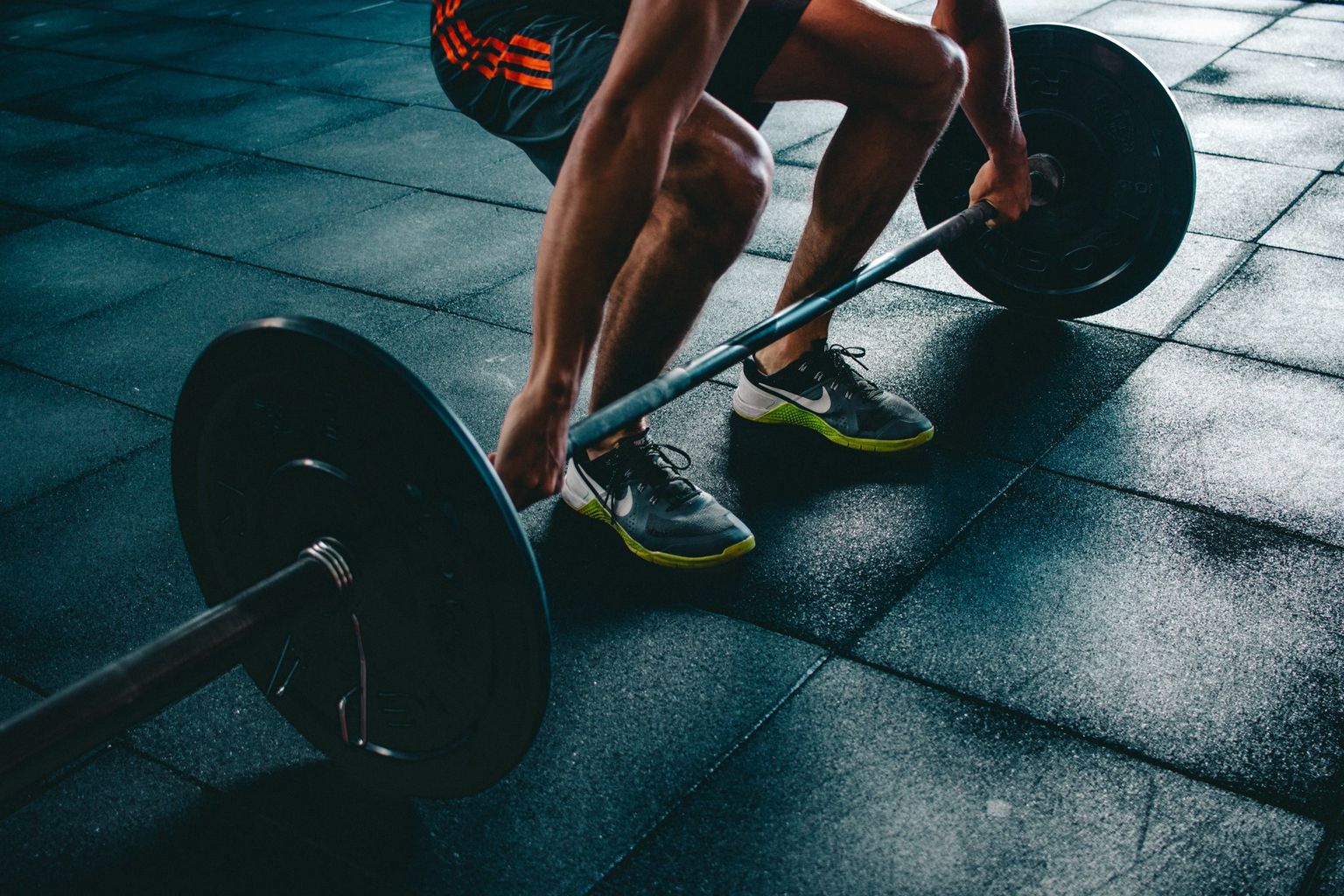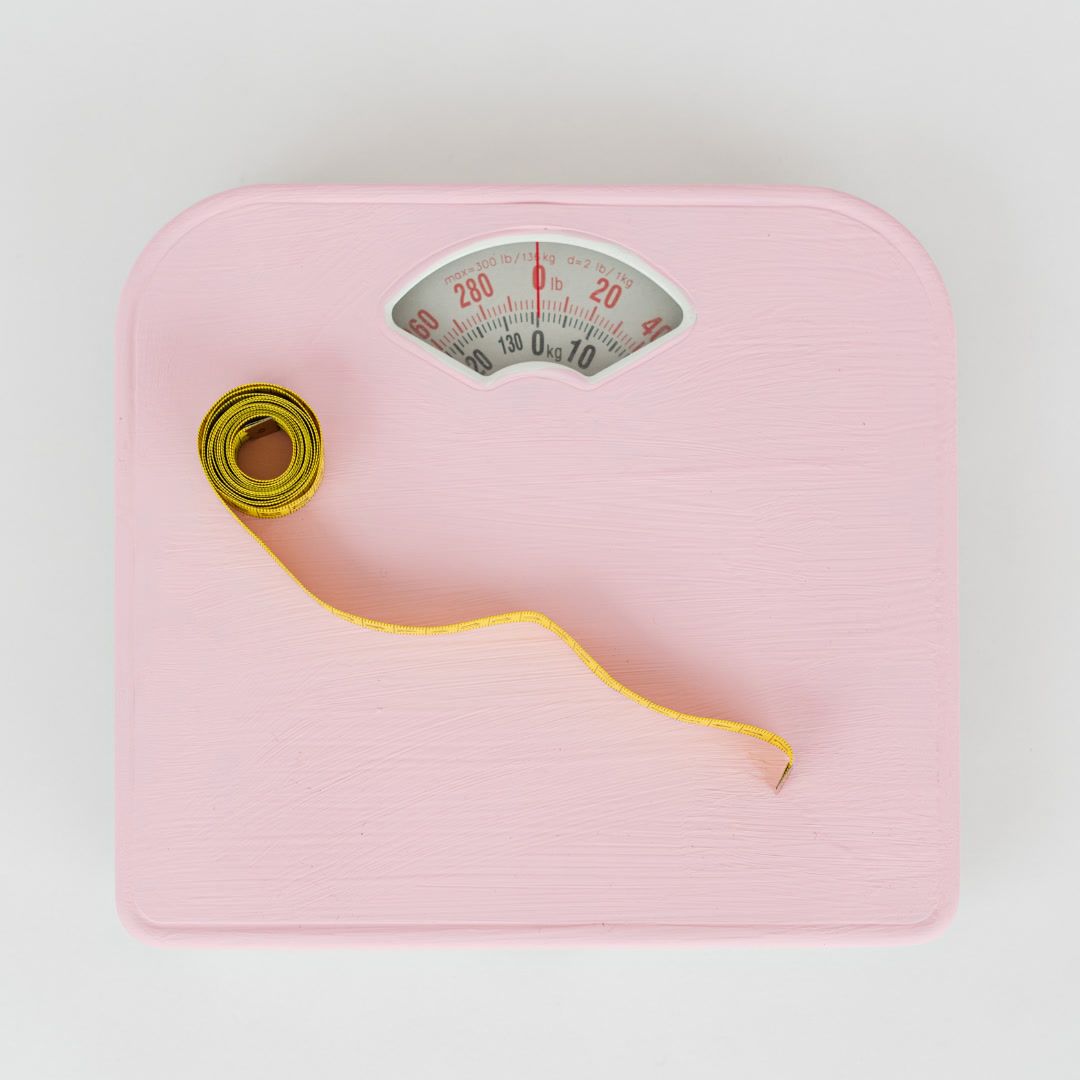9 Science-Backed Sciatica Stretches You Can Do Anywhere
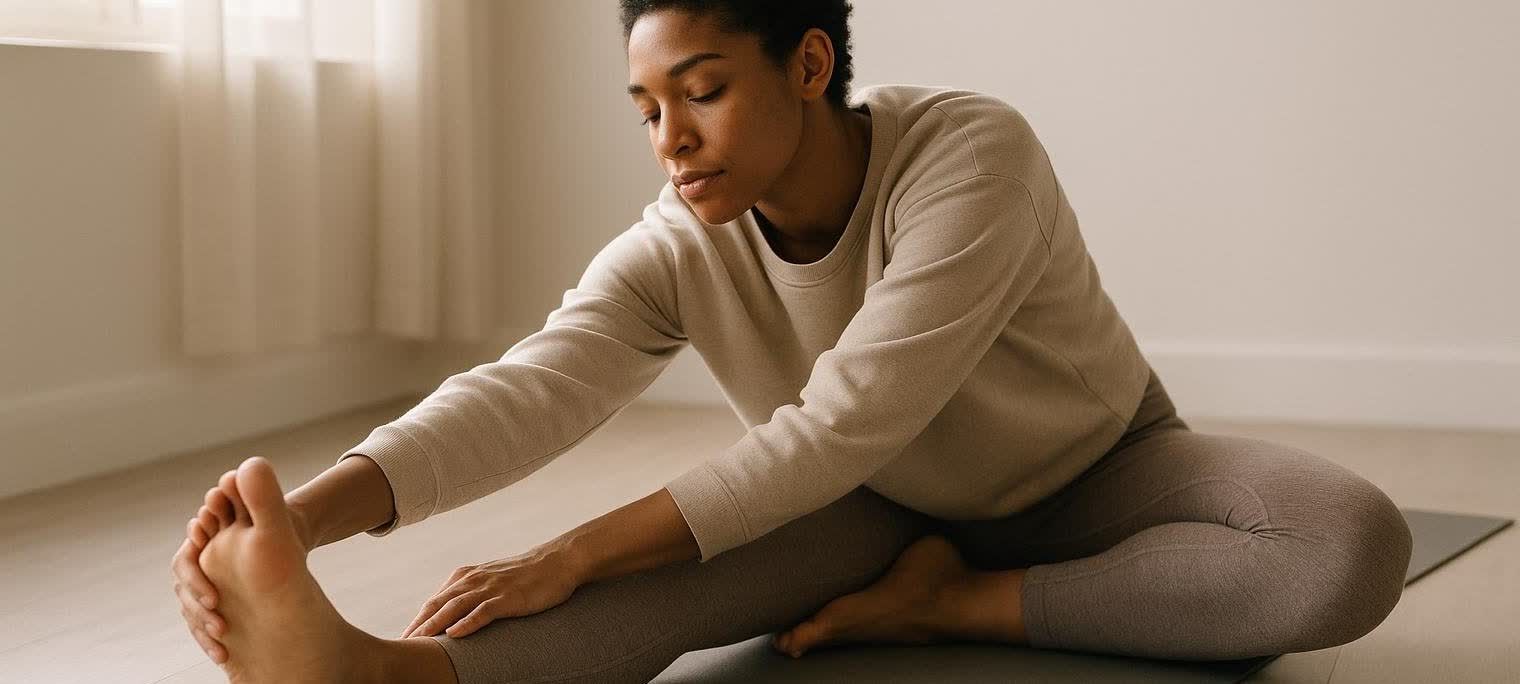
9 Science-Backed Sciatica Stretches You Can Do Anywhere
Sciatica pain can feel like an electric shock that starts in your lower back or glutes and shoots down the back of one leg. That zing happens when something—often a tight muscle, herniated disc, or even pregnancy—compresses the sciatic nerve, the largest nerve in your body. Gentle, consistent stretching is one of the simplest ways to relieve that pressure and keep it from coming back (Harvard Health).
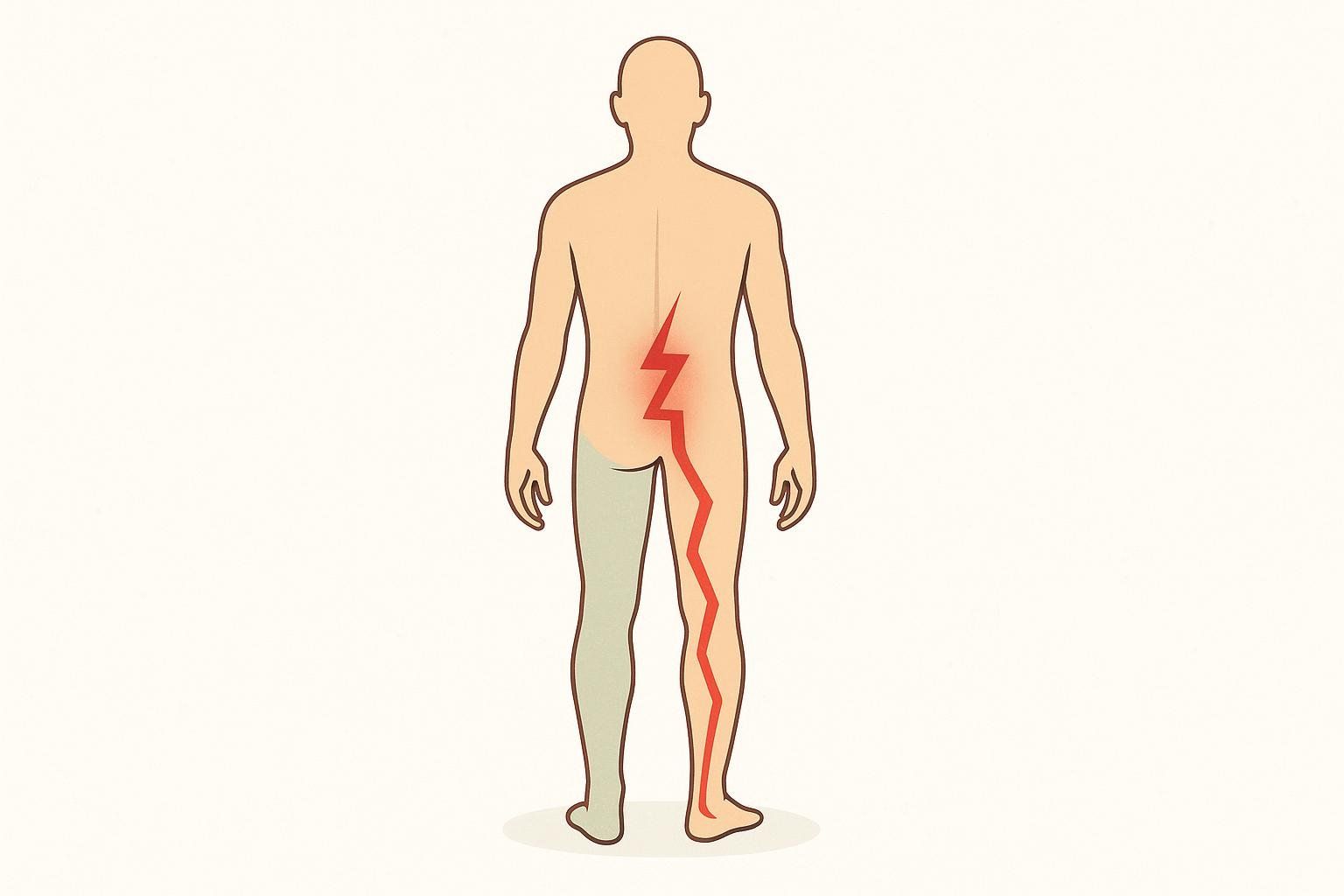
Below you’ll find nine effective sciatica stretches, complete with desk, runner, and senior modifications so office workers, runners, and older adults alike can find relief.
Quick note: Stop immediately and talk to a healthcare professional if any stretch makes your pain sharper, stronger, or causes tingling.
How to Use This Stretch Guide
- Identify your pain pattern. Does it live mostly in your glute? Down the hamstring? Use the headings below to jump to targeted moves.
- Pick 3–5 stretches that feel comfortable and do them once or twice a day.
- Hold each stretch 20–30 seconds, repeat 2–3 times, and breathe slowly—no bouncing!
- Stay consistent. Research shows sciatica typically improves within 4–6 weeks with daily mobility work (Medical News Today).
Ready? Let’s stretch.
1. Figure-4 Piriformis Stretch (Glutes & Hips)
Why it helps
A tight piriformis muscle can pinch the sciatic nerve. Opening the hips reduces that squeeze.
How to do it
- Lie on your back, knees bent, feet flat.
- Cross your right ankle over the left thigh to form a “4.”
- Grab the back of your left thigh and gently pull both legs toward your chest until you feel a stretch deep in the right glute.
- Hold 30 seconds, switch sides.
Modification
Sit tall in a chair, cross ankle over opposite knee, and hinge forward.
2. Knee-to-Opposite-Shoulder (Glutes & Lower Back)
Why it helps
This move lengthens the small deep glute muscles that often compress the sciatic nerve.
How to do it
- Lie on your back with legs straight.
- Pull your right knee toward the left shoulder with both hands.
- Keep your lower back pressed into the floor.
- Hold 20–30 seconds, repeat on the other side.
Modification
Hug the knee only halfway across if full range increases discomfort.
3. Seated Spinal Twist (Lower Back & Hips)
Why it helps
Gentle rotation creates space between vertebrae and relieves nerve compression in the lumbar spine.
How to do it
- Sit with legs extended. Bend the right knee and plant the foot outside the left thigh.
- Place right hand behind you. Inhale to lengthen your spine; exhale and twist, bringing the left elbow across the right knee.
- Hold 30 seconds, switch sides.
Modification
Perform in a sturdy chair, twisting gently from the waist.
4. Cat-Cow Flow (Core & Spine Mobilizer)

Why it helps
Moves the lumbar spine through flexion and extension, boosts circulation, and warms tissues before deeper stretches.
How to do it
- Start on all fours, wrists under shoulders, knees under hips.
- Inhale: drop the belly and lift chest/tailbone (Cow).
- Exhale: round your spine and tuck chin (Cat).
- Repeat 10–15 smooth reps.
Modification
If kneeling hurts, do a seated cat-cow by placing hands on knees and arching/rounding the back.
5. Standing Hamstring Stretch (Back of Thigh)
Why it helps
Releasing tight hamstrings reduces tension on the pelvis and lumbar spine, easing nerve irritation.
How to do it
- Place the heel of your right foot on a step or sturdy chair.
- Keep the leg straight and hinge at hips until you feel a gentle pull in the back of your thigh.
- Flex the foot for a deeper stretch.
- Hold 20–30 seconds; switch sides.
Modification
At the office, use a low drawer or stable trash can during coffee breaks.
6. Pigeon Pose (Deep Hip Opener)
Why it helps
Targets the piriformis and hip rotators, common culprits in sciatic pain.
How to do it
- From hands-and-knees, slide your right knee forward behind your right wrist.
- Straighten the left leg behind you.
- Square hips and lower chest toward the floor.
- Hold 30 seconds–1 minute, switch sides.
Modification
Try a reclined figure-4 if getting to the floor is difficult.
7. Sciatic Nerve Glide (Nerve Mobility)
Why it helps
“Flosses” the nerve through surrounding tissue, reducing adhesions without aggressive stretching.
How to do it
- Sit on the edge of a chair, back straight.
- Extend your right leg forward, heel on the floor.
- Point toes up and slowly look up as you bend the foot (dorsiflex).
- Reverse: point toes down while tucking chin.
- Repeat 10 controlled reps; switch legs.
Modification
Perform standing with your heel on a low step if sitting is painful.
8. Child’s Pose with Side Reach (Lower Back & Lats)
Why it helps
Gentle traction lengthens the lumbar spine and opens tight side-body tissue that can pull on the pelvis.
How to do it
- Kneel with big toes touching, knees apart. Sit back on heels and reach arms forward.
- Walk hands to the right to open the left side body; hold 20 seconds.
- Walk hands to the left; hold 20 seconds.
Modification
Place a pillow between hips and heels for extra support.
9. Wall Calf Stretch (Lower Leg & Calf)
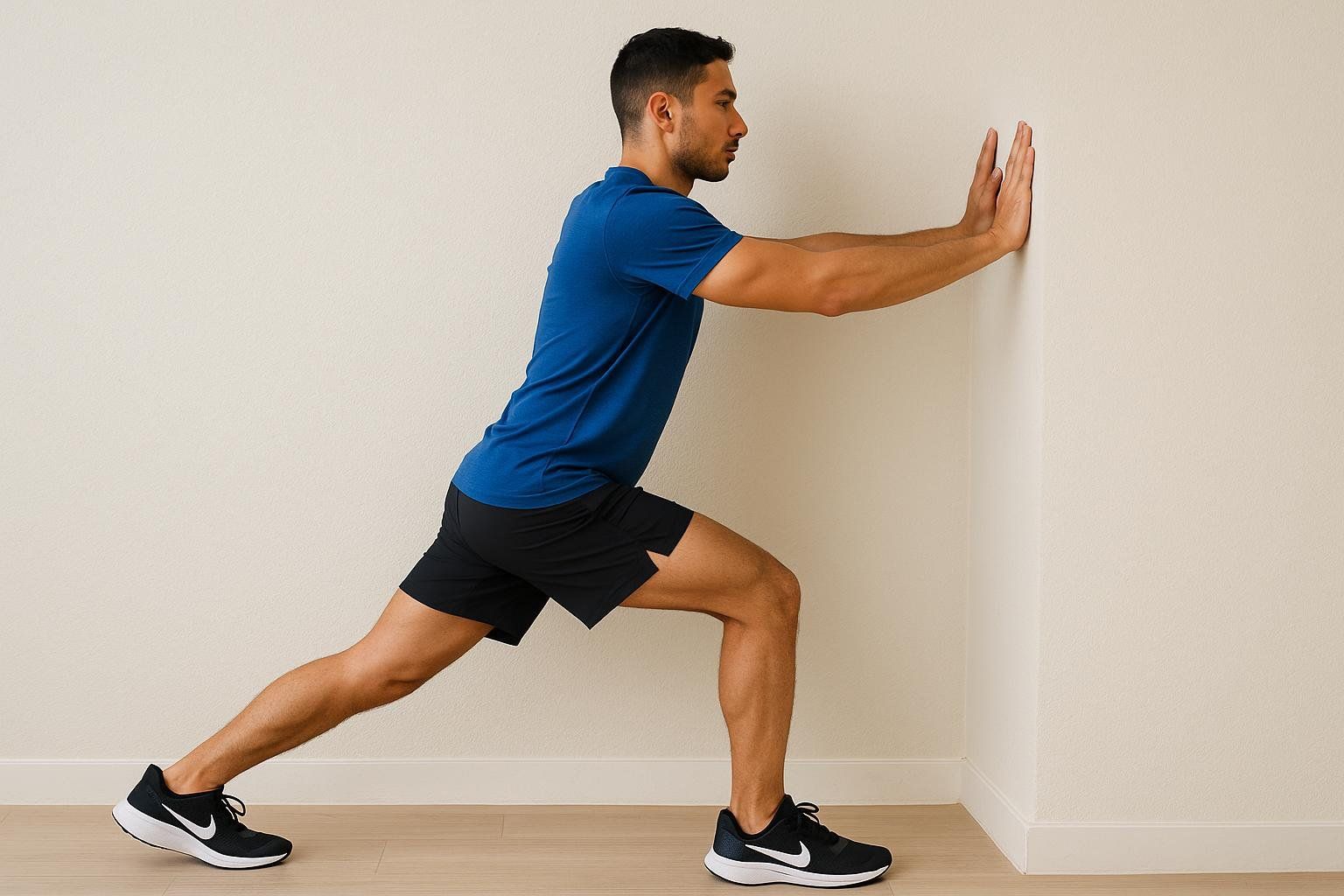
Why it helps
Tight calves can tug on hamstrings and pelvis, indirectly aggravating sciatic symptoms.
How to do it
- Stand facing a wall, palms flat.
- Step left leg back, press heel down, slight bend in front knee.
- Shift hips forward until you feel a stretch in the left calf and lower leg.
- Hold 25 seconds, switch sides.
Modification
Lean onto a countertop instead of a wall for more balance support.
Quick 5-Minute Desk Routine
- Seated spinal twist — hold 30 seconds
- Seated figure-4 stretch — hold 30 seconds
- Standing hamstring stretch — hold 30 seconds per leg
- Wall calf stretch — hold 30 seconds per leg
- Sciatic nerve glide — 10 reps per leg
This routine can help ease desk-related discomfort and refocus your day.
Runner Warm-Up & Cool-Down
Pre-run (≈5 minutes)
- Cat-Cow Flow — 10 reps
- Standing hamstring stretch — hold 15–20 seconds per leg
- Knee-to-opposite-shoulder — hold 15–20 seconds per side
Post-run (≈5 minutes)
- Pigeon pose — hold 30 seconds per side
- Standing hamstring stretch — hold 30 seconds per leg
- Sciatic nerve glide — 10 reps per leg
Pair these stretches with strength moves from our mobility drill guide to reduce recurrence.
Gentle 5-Minute Routine for Seniors

- Seated cat-cow — 5–8 smooth reps
- Seated spinal twist — hold 20 seconds per side
- Seated figure-4 stretch — hold 20 seconds per side
- Wall calf stretch — hold 20 seconds per leg
- Seated sciatic nerve glide — 8 reps per leg
Perform these after warming up with a short walk around the house.
Safety Tips & When to See a Pro
- Warm muscles first with light walking or marching in place.
- Stretches should create a gentle pulling sensation, not sharp or burning pain. Stop if a stretch is painful.
- Balance stretching with core and glute strengthening to support the spine.
- Call your doctor if pain lasts > 6 weeks, you feel numbness, weakness, or loss of bladder/bowel control (Medical News Today).
Take the Next Step with BodySpec
Tracking how your body responds to a new mobility routine is easier when you measure more than scale weight. A DEXA scan provides detailed body-composition data—including potential right-to-left muscle asymmetries—that can flag movement imbalances worth discussing with your physical-therapy or training team.
Book a scan near you today to put data behind your recovery.
FAQ
Can stretches cure sciatica permanently?
Stretching can relieve pain and reduce flare-ups but works best alongside strength training and healthy posture habits.
How often should I stretch?
Aim for one to two focused stretch sessions daily—morning to loosen up and evening to wind down.
Do I need special equipment?
A mat or towel and a sturdy chair are plenty.
